|
– Part 3 –
On an Alpine lake, police dragging the water pull up the body of a young woman. A few weeks later, young Penny Applegate, who has been living with her mother in Italy for ten years and who is now handicapped after her back was broken in a horse riding accident, touches down at an unspecifoied French airport. Following the death of both her mother and her closest friend Penny, she has come to France on the written invitation of her wealthy father to live with him and her stepmother Jane (Ann Todd), whom she has never previously met. She’s greeted at the airport by her father’s chauffeur, Robert (Ronald Lewis), who on the drive to the house explains that Penny’s father didn’t meet her in person because he has gone away on business for a few days. He also lets slip that her father has been ill for some time, and that his physician, Dr. Pierre Gerrard, is often at the house in attendance.
When they arrive, Jane greets Penny warmly and when they dine together that evening, Penny opens up to her about her past tragedies and sadness. All seems well, but when Penny investigates a mysterious light in the summer house that night, she gets a shock that panics her to such a degree that she tumbles into an ill-kept garden swimming pool, from which she is rescued by Robert, whose quarters are close by. When she tells Jane and Dr. Gerrard what she saw, they do their best to convince her that it was all a product of her troubled imagination. Penny doesn’t buy it, and only the sympathetic Robert seems willing to accept her suspicion that something is not right here.
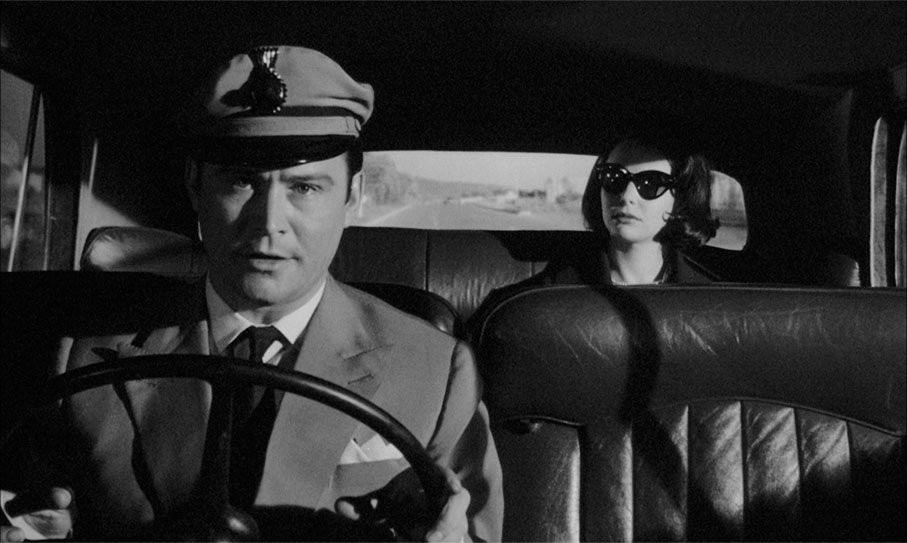
To reveal more would be unfair, as this is a film that thrives in part on its plot twists and narrative uncertainties. This also means that I can’t reveal which celebrated thriller was the clear inspiration for Jimmy Sangster’s consistently smart screenplay, as knowing this would allow anyone familiar with that film to second-guess the main trust of the story to come. Having said that, if you do know the earlier film, you won’t have to watch much of Taste of Fear before you recognise the source and do this anyway, but Sangster cannily acknowledges this and brings it out into the open not long after the halfway mark, shifting the uncertainty about what is going on to whether Penny and Robert can confirm what they suspect.
Taste of Fear is one of a number of tightly-wound and involving psychological thrillers made by Hammer during the 1960s, almost as a sideline to the gothic horrors that by then were defining the studio’s identity, and while the horror films were shot in vivid Technicolor, the thrillers were almost all in black-and-white. In a sense, this helped to align them with the European works that were their brethren and sometimes, as here, their inspiration. Yet I’d argue that this was not a case of hanging onto the coattails of superior films and filmmakers, but a stylistic choice that had already been proven to work particularly well for the subject matter, and had even become part of the iconography of the subgenre, visually differentiating the reality-based thrillers from the fantasy-driven colour works. Personally, I have a particular fondness for the look and feel of these films, in part because my first exposure to them in was in my youth via screenings on a black-and-white TV, and back then I was young and inexperienced enough to be scared witless by them. I’d also suggest (and I know I’m not alone in this opinion) that the finest of these films showcase Hammer at the top of its game, and that Taste of Fear is not just the first of them but the best. Jimmy Sangster has cited this screenplay as a personal favourite and it’s not hard to see why – the dialogue is smart and purposeful, with theories and information discussed in a believable manner that never plays like exposition, while the plot twists are all superbly calculated and timed. The passing of time and the number of twisty thrillers that followed in the wake of these films may make it easier for a modern audience to predict some of the surprises (though I’d argue it would only be very shortly before each one), but they are all so well executed and ingenious that they still should prove rewarding to all but the most drearily cynical of viewers.
Director Seth Holt, who would later work again for Hammer on The Nanny (1965, another Sangster screenplay) and Blood from the Mummy’s Tomb (1971), builds superbly on the script’s solid foundations, working with master cinematographer Douglas Slocombe (check out his filmography if you want your jaw to drop) to transform a house that in the sunshine and in colour would likely look like a dream holiday home into a temple of monochrome mystery and menace. Coupled with a canny use of silence and sound effects and the deeply unsettling strings and crescendos of Clifton Parker’s excellent score, he builds tension so effectively that I genuinely started to dread where events might next take us. I started to see potential threats in every corner and shadow – at one point Penny wheels herself into the garage and the sense of genuine menace that radiates from something as simple as a parked car just due to how it is lit is extraordinary.
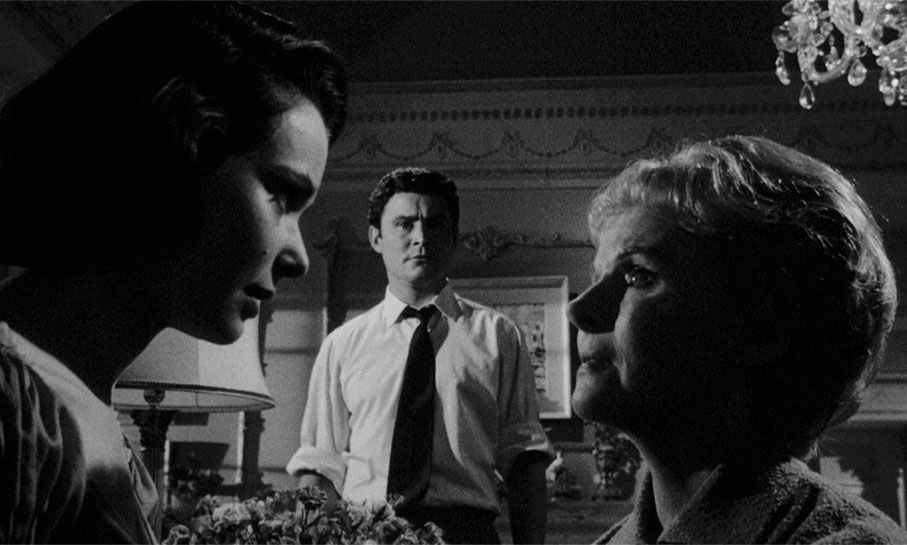
A quartet of strong performances from Susan Strasberg, Ronald Lewis, Ann Todd and Christopher Lee (who is not the least bit handicapped by his character’s French accent) really help to sell it. Strasberg in particular does sterling job as the troubled and intermittently terrified Penny, and at times her wide-eyed fear and incomprehension at what is unfolding around her reminded me of Jessica Harper’s portrayal of Suzy Bannion in Dario Argento’s Suspiria. Ronald Lewis utterly convinces as a stand-up guy who just wants to help and finds himself unexpectedly attracted to Penny, and there are so many small details in Ann Todd’s performance as Jane that you can only fully appreciate on a second viewing. Indeed, given that the story is driven by mystery, one of the film’s unexpected strengths is how rewarding a second or even third viewing can be, with the meaning of words and actions and even seemingly insignificant details transformed by the knowledge of where they are really leading.
Taste of Fear, which was more sensationally titled Scream of Fear for its American release, is an absolutely belting psychological thriller, one that is keenly aware of its influences and is able to play tricks on even an audience that might pick up on them. It’s tightly written, beautifully made and compelling acted, and even 58 years after its release it has the power to seriously wind up a receptive audience. No question, this is my favourite film in a very strong box set, and without doubt one of Hammer’s best.
Framed in the film’s original aspect ratio of 1.66:1, the monochrome image here boasts some punchy contrast and deep shadows, but the lit areas are all rendered clearly. Detail is well defined, but the image is not quite as sharp as other transfers in this set (especially when compared to the pin-sharp transfer of The Damned), but the grain is also slightly more pronounced, suggesting possibly the use of a higher speed film stock. In all other respects the transfer is in good shape, with no damage or obvious signs of dirt or dust.
Unexpectedly, the soundtrack is not Linear PCM but DTS-HD Master Audio 1.0 mono and is in good condition, with no hiss or fluff to disrupt the film’s unnerving use of silence, and clear reproduction of the dialogue and music.
Optional subtitles for the deaf and hearing impaired have been included.
When you select Play on the main menu, you are offered the option to watch the film with the UK title of Taste of Fear or the American title Scream of Fear. As far as I know, the only difference is the title.
Audio Commentary by Kevin Lyons
In an information-packed commentary, Kevin Lyons demonstrates why he’s the editor of The Encyclopaedia of Fantastic Film and Television through the sheer amount of detail he provides on not just the key filmmakers and the lead actors, but also some of the uncredited bit-part players. He talks about the BBFC’s vetting of the screenplay, comments on the specifics of scenes and how the meaning of some actions and words change on a second viewing, highlights how camera shots and moves – as well as sound and silence – are used with narrative purpose, and reads quotes from those involved in the production. Even if you know the film well the chances are you’ll learn something here.
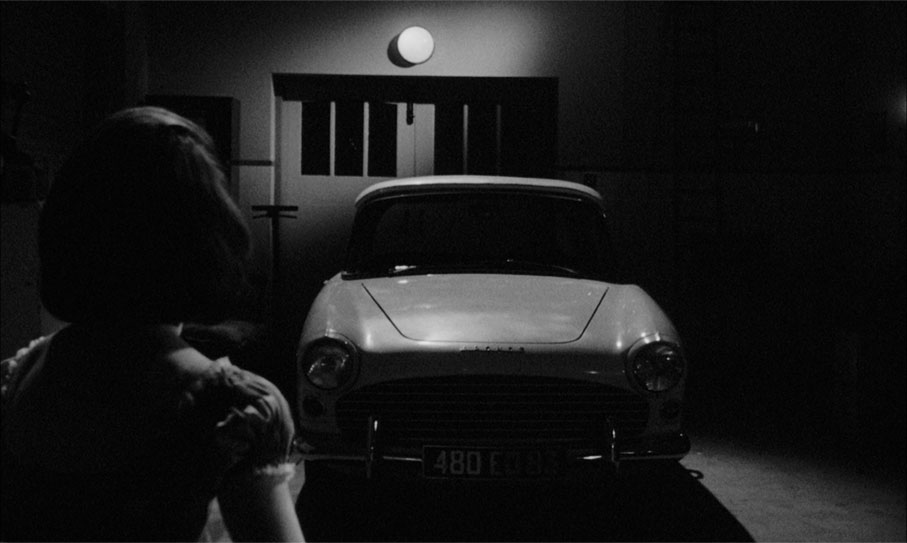
Body Horror: Inside Taste of Fear (22:16)
Again constructed around interviews with Jonathan Rigby, Alan Barnes and Kevin Lyons, this featurette follows the format of the previous ones from Marcus Hearne, providing a brisk but engaging overview of the film and its production, but with the two-camera tic that quickly had me listening rather than watching. Most of what is said here is covered elsewhere, often in more detail, but the three contributors know their stuff and their enthusiasm is engaging.
Hammer’s Women: Ann Todd (11:35)
Melanie Williams provides an overview of the career of actor Ann Todd, pausing to discuss some of her key roles, her marriage to David Lean and their later breakup, and her eventual switch from acting to directing travel documentaries.
Archival Interviews
The BEHP Video Interview with Jimmy Sangster (2008) (116:47)
Oh, this is a treat. Recorded for the British Entertainment History Project, this interview with screenwriter Jimmy Sangster was conducted in 2008 by Jonathan Rigby and is a prime example of why you don’t need to jazz up the visuals if your interviewee is worth listening to. Running for almost two hours and captured in a single shot that only varies its framing slightly once or twice, it’s nonetheless hugely engaging, with Sangster, prompted by Rigby, taking us on a detailed, revealing and often entertaining trip through his long career in the film industry. We learn why he was fired from his first job as a projectionist, how he ended up working for Hammer as a production manager, and how he made the switch to screenwriting after being sent off by Anthony Hinds to shape a plot they had just concocted into a screenplay. Despite a few holes in his memory (he has no recollection at all of writing the original screenplay for the 1971 Who Slew Auntie Roo), his recollections are fascinating and his honesty refreshing, with him describing the filming of his first screenplay, X the Unknown, as the unhappiest few weeks of his life and its director Leslie Norman as “a grumpy old bugger.” His key screenplays for Hammer get detailed coverage, including Taste of Fear, which remains his favourite. Not all of his memories are happy ones, as indicated when he rolls his eyes and says, “Oh, don’t talk about Lust for a Vampire” (which he directed and hates), and when Rigby brings up the German film Flashback, which was made from a script that Sangster was unable to sell in Britain, his reaction is an almost startled, “Oh shit!” This is great stuff. Grab a coffee and some biscuits, put your feet up in front of the TV and lose yourself in this for a couple of hours. You won’t be sorry.
The BFI Southbank Interview with Jimmy Sangster (2008) (67:40)
I’m cheating a bit here as I usually cover extras in the order they appear on the disc’s special features menu and this one was second in line after the commentary track, but I confess to having watched the video interview with Sangster first because it looked to be as much fun as it proved to be. Whether you do likewise or opt to first listen to this audio recording of Sangster being interviewed at the BFI Southbank after a screening of A Taste of Fear, you’re going to experience some serious overlap, with many of the stories repeated almost verbatim on both, hardly surprising since they were recorded the same year. The length of the BEHP interview ensures that Sangster is usually able to go into more detail there, but there are still plenty of details that are unique to this extra, including the revelation that during the making of The Nanny Bette Davis would call Sangster up late at night to discuss the script and end up trying to get into his trousers, and the admission that if he hit a point in the writing of a script that required research, he’d simply change the plot. We discover that director Roy Ward Baker, with whom Sangster worked on several films, is in the audience, and I snorted with laughter when an audience member asks if any of the American stars he worked with that stood out and Sangster responds instantly, “Yes, Dane Clark. He was an absolute shit.”
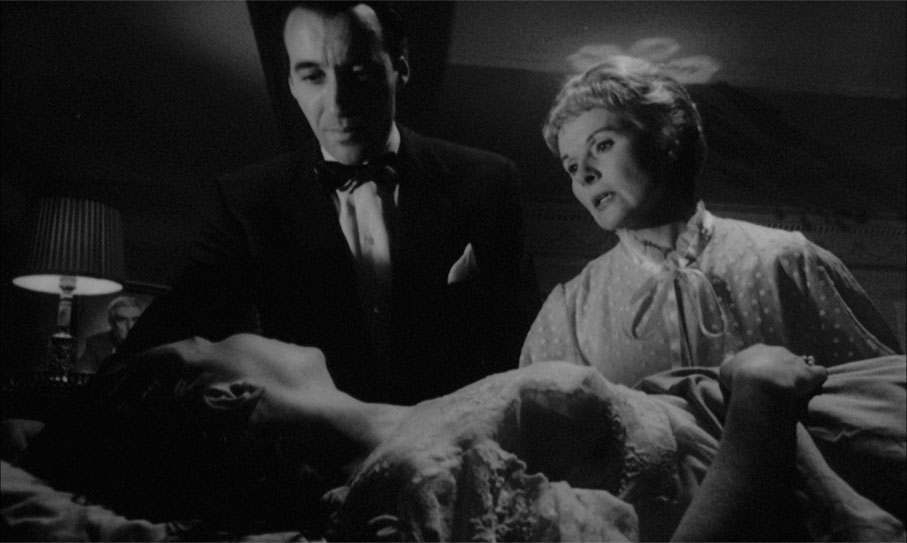
The BEHP Interview with Douglas Slocombe – Part Two (1988) (81:27)
Part two of an audio interview whose first part appeared on Indicator’s Blu-ray release of The Third Secret, my review of which was, due to personal circumstances and time limitations, begun but never completed. In it, Slocombe takes us chronologically through the second half of his career as a cinematographer, beginning, most appropriately, with Taste of Fear (which he enjoyed doing) and covering every major title – and there have been many – up to Raiders of the Lost Ark and its first two sequels. He describes Joseph Losey (for whom he shot The Servant) as “a most exciting man to work for,” Ken Russell as “absolutely brilliant and absolutely impossible,” and confirms that he enjoyed the experience of shooting Russell’s The Music Lovers a great deal. There are some fascinating stories here, including details of a deal done with the Shah of Iran for new cameras and lighting equipment for the filming of Caravans, and there’s horrifying tale of when Slocombe was hit by a plane during the filming of The Blue Max, an accident that stripped the skin from his back and came within centimetres of a potentially fatal spinal injury. Another terrific listen.
Desmond Davis and John Crome: Fear Makers (8:37)
Camera operator Desmond Davis and assistant sound editor John Crome look back at the making of Taste of Fear, recalling director Seth Holt’s heavy drinking, the issues caused by the presence of Susan Strasberg’s mother, and how Douglas Slocombe never used a light meter and could accurately gauge the required f-stop by observing how the light fell onto the back of his hand. Crome tells a story of a cock-up he made when sending the first edited copy of the film off to a studio screening, and Davis, who went on to become a respected director (his filmography in that role includes the 1983 TV movie adaptation of The Sign of Four and the much-loved Harryhausen-Schneer production Clash of the Titans), recalls the awkwardness of having Slocombe work for him later, though I’ve been unable to pinpoint on what project that was.
Anxiety and Terror: Huckvale on Parker (24:51)
David Huckvale is back to deconstruct Clifton Parker’s excellent score for Taste of Fear, but only after he has outlined in some detail why he loves every aspect of what he regards as one of Hammer’s finest films. You’ll get no argument from me on that one. As ever, it’s fascinating stuff, and is handily captioned up front with a warning about significant plot spoilers. Heed this if you haven’t yet seen the film as these spoilers come early, and just dipping in to see what this is like will likely ruin a number of major twists for the uninitiated.
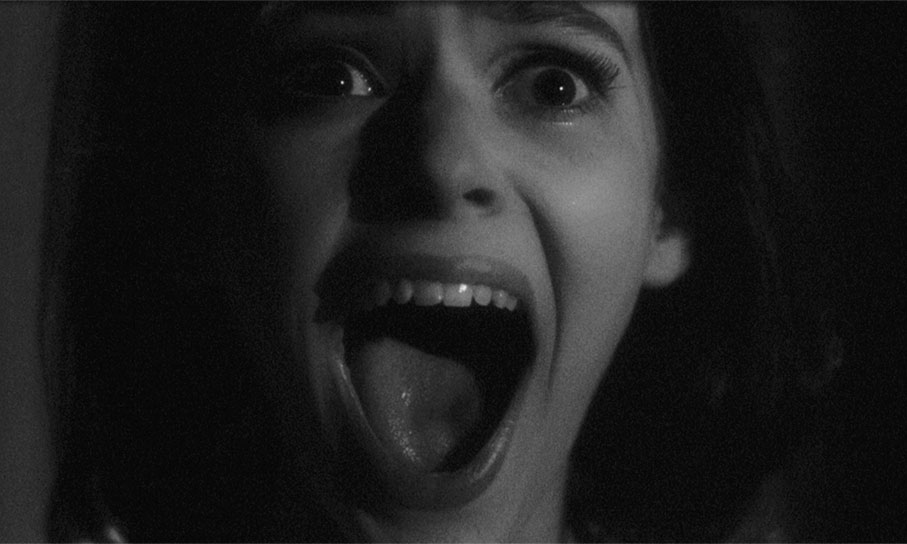
Scream of Fear Super 8 version (19:34)
A typically high-speed skip through the film’s key scenes, which doesn’t allow time for tension-building and comes across as a “then this happened, then this happened...” approach to storytelling. A narrator with an urgent way of speaking fills in the gaps, though his early description of Penny as “a hopeless invalid” made me want to punch him. Has the American title, Scream of Fear, and handily also has optional English SDH subtitles.
Original US Trailer (1:09)
The American trailer under the title of Scream of Fear, which maintains continuity with the poster campaign by focussing on a single still image of Susan Strasberg screaming, though there are a small spattering of tantalising clips here, and while only Strasberg’s face is shown, we do get a peek at Christopher Lee’s mouth. The end caption and graphics seemed designed to invoke memories of Psycho.
Sam Hamm Trailer Commentary (1:37)
Hamm is back with a quick overview of the film to accompany a different US trailer to the one detailed above, one that includes no film clips or photos but does have some scrolling introductory text from ‘The Management’.
Image Gallery
53 screens of promotional and production photos, horribly coloured front-of-house stills and a wide selection of international posters, all of which use the same image of a screaming Susan Strasberg.
Booklet
Following the credits, the booklet opens with a learned essay on the film’s production by genre writer Marcus Hearne. In case you’ve not heard enough from Jimmy Sangster on the disc itself (can we ever have too much Jimmy Sangster?), there’s then an extract from his 2001 memoir Inside Hammer in which he talks about the writing and production of Taste of Fear. Next we have extracts from British and American press books that focus on Susan Strasberg, plus some suggestions on how to promote the film, which include the news that “There’s nothing so electrifying as the female scream.” Is that so? Extracts from contemporary reviews follow. Not too many surprises here.
< previous | next >
The Revenge of Frankenstein | The Two Faces of Dr. Jekyll | The Damned
|